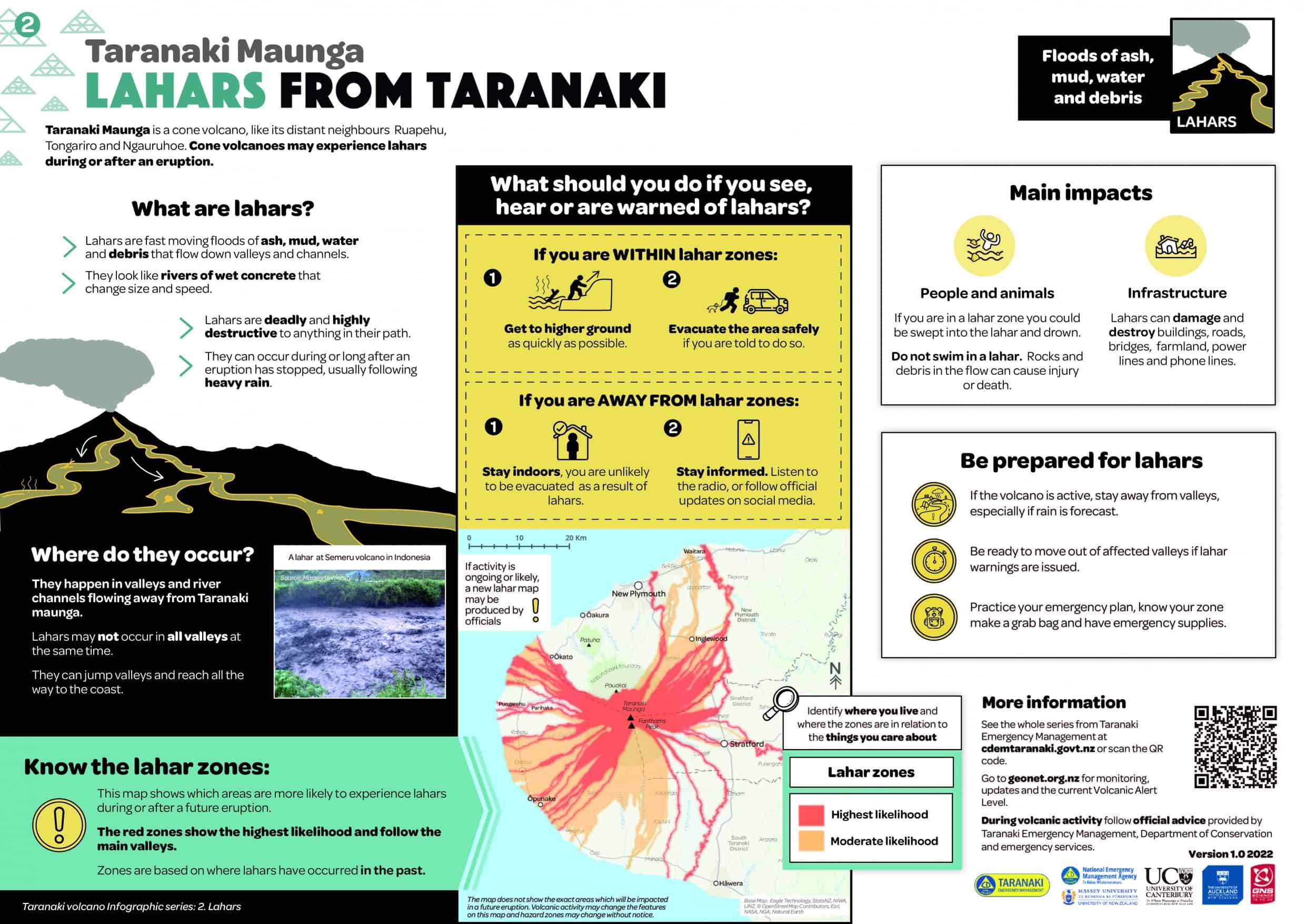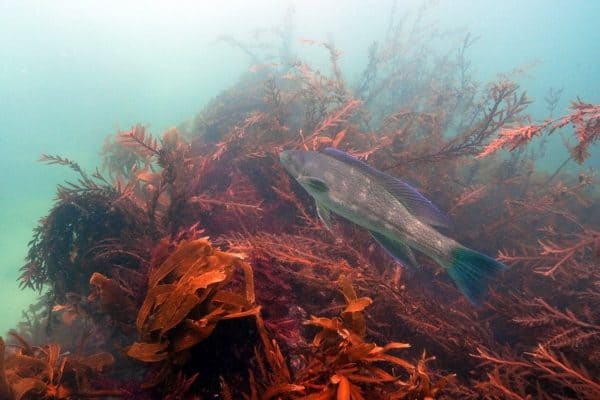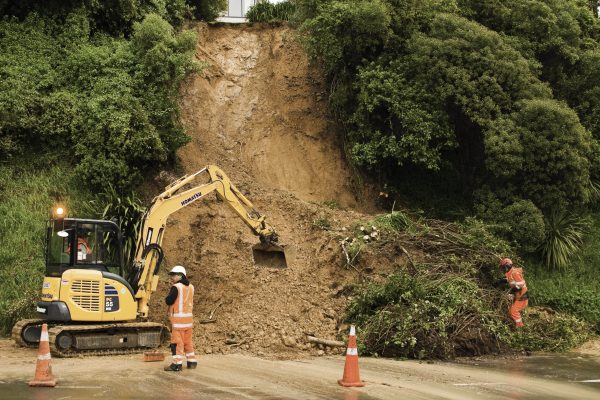By Jenny Stein
Last month the Taranaki Civil Defence and Emergency Management Group Office (TEMO) published a series of posters about volcanic processes associated with Taranaki Maunga. With contributions from Resilience Challenge researchers and funding from the National Emergency Management Agency (NEMA), GNS Science, and the Transitioning Taranaki to a Volcanic Future Endeavour Project, the posters address misconceptions about the risks associated with the volcano and deliver key messages about how to stay safe in the event of an eruption.
“The region wouldn’t exist without the volcano,” explains Teresa Gordon, an analyst at the TEMO office who initiated the poster development project. “But there’s potential for quite a bit of disruption if the volcano goes up, and that would affect the whole country, not just the region.”
Although it has not erupted in living memory, Taranaki Maunga is an active volcano and the TEMO’s top priority for response planning for the future. Teresa wanted to make a poster series that would provide people with the information they needed to meaningfully engage in the response planning process, rather than just assuming there was nothing they could do if the volcano were to erupt.
“Resilience comes from self-agency,” Teresa says. “People become resilient when they believe that they can make a difference through their individual actions.”
Communicating what those actions should be required breaking down the complex nature of a volcanic eruption into different processes, each with their own ranges of potential impact and risk in different areas and over different periods of time. Each process then became a separate poster in the series, all informed by decades of scientific research.
“You have to distil down 30 years’ worth of work, hundreds of papers, all that information into a couple of posters. So that’s a hard job,” says Jon Procter, the lead science advisor on the project. A Professor of Natural Hazards at Massey University and Co-Leader of the Resilience Challenge’s Volcanoes programme, Jon says the biggest challenge was making sure that all the people contributing to the project were on board with the same clear and accurate messages about volcanic phenomena. “You just really want those simple key messages that are accurate and presented in a way which could be relevant to everyday people,” Jon says.
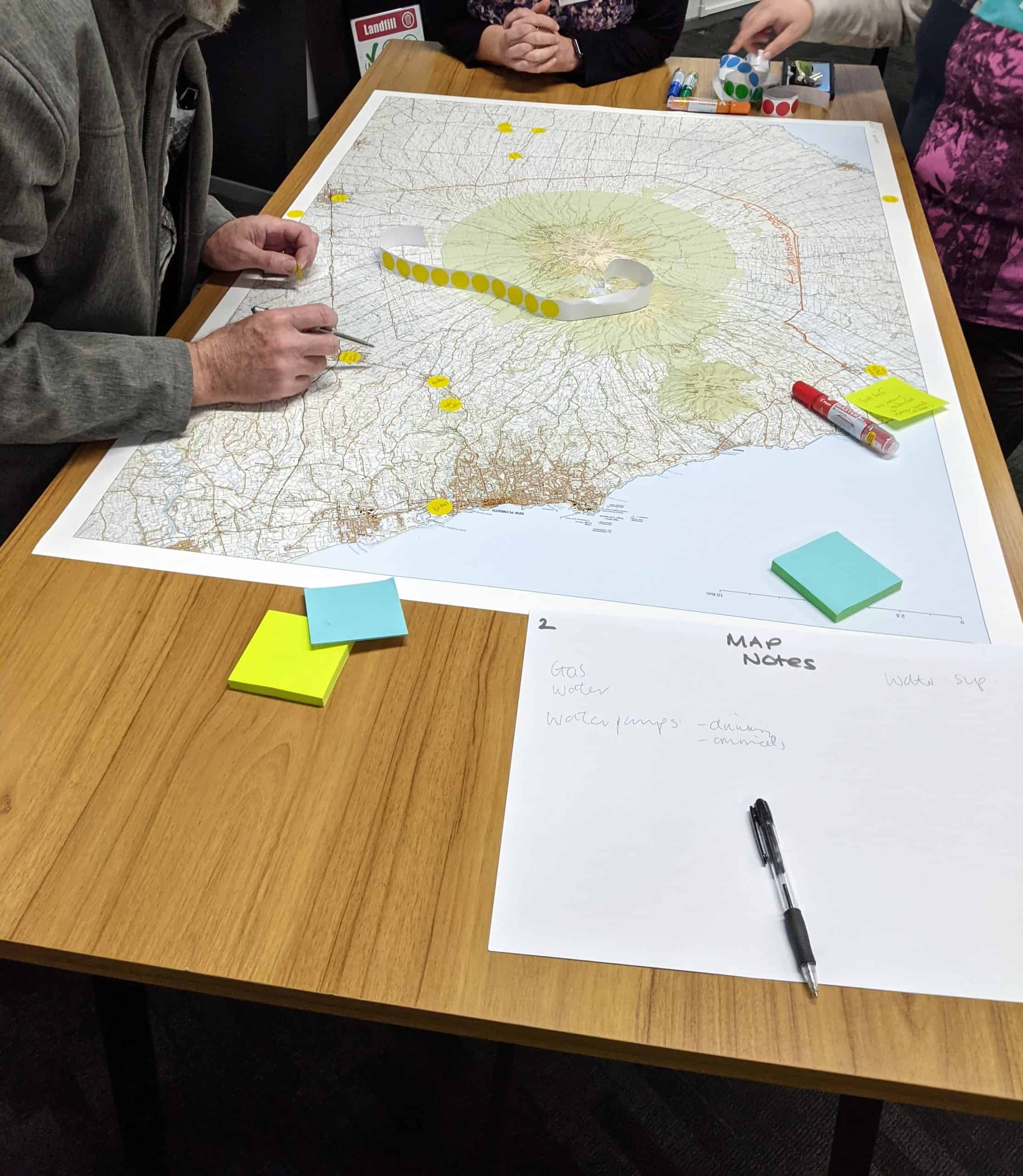
To ensure their information was relevant to their target audiences, the poster development team conducted focus groups with council staff and the general public and found that people wanted to know two things: what they could do to keep themselves safe during an eruption, and what the impacts of that eruption would be.
“Starting off with that user perspective is not that common, so we were glad to bring that in, not just right at the end, but from the beginning,” says Danielle Charlton, a Hazard and Risk Management Scientist with GNS Science, who oversaw and led the design of the posters. To ensure that information was presented clearly and effectively, she used eye-tracking studies of how people view maps to determine where to put the most vital information, imposed a limit of 500 words per poster, and a reading age of 12 and up for the series.
“We wanted to make sure that someone might have remembered this information,” she says. “If we added something in, we’d have to cut something out somewhere else, so it really helped prioritize that information.”
“The things that happen around their volcanoes are not considered hazards (by Māori). They are considered expressions of that entity,” says Jon, who sees the move away from the use of ‘hazard’ in favour of words like ‘process’ or ‘phenomena’ as a proactive step in the communication of risk. “‘Hazards’ has that real negative connotation. We’re trying to build resilience by getting people to recognize that these are natural events in our environment.”
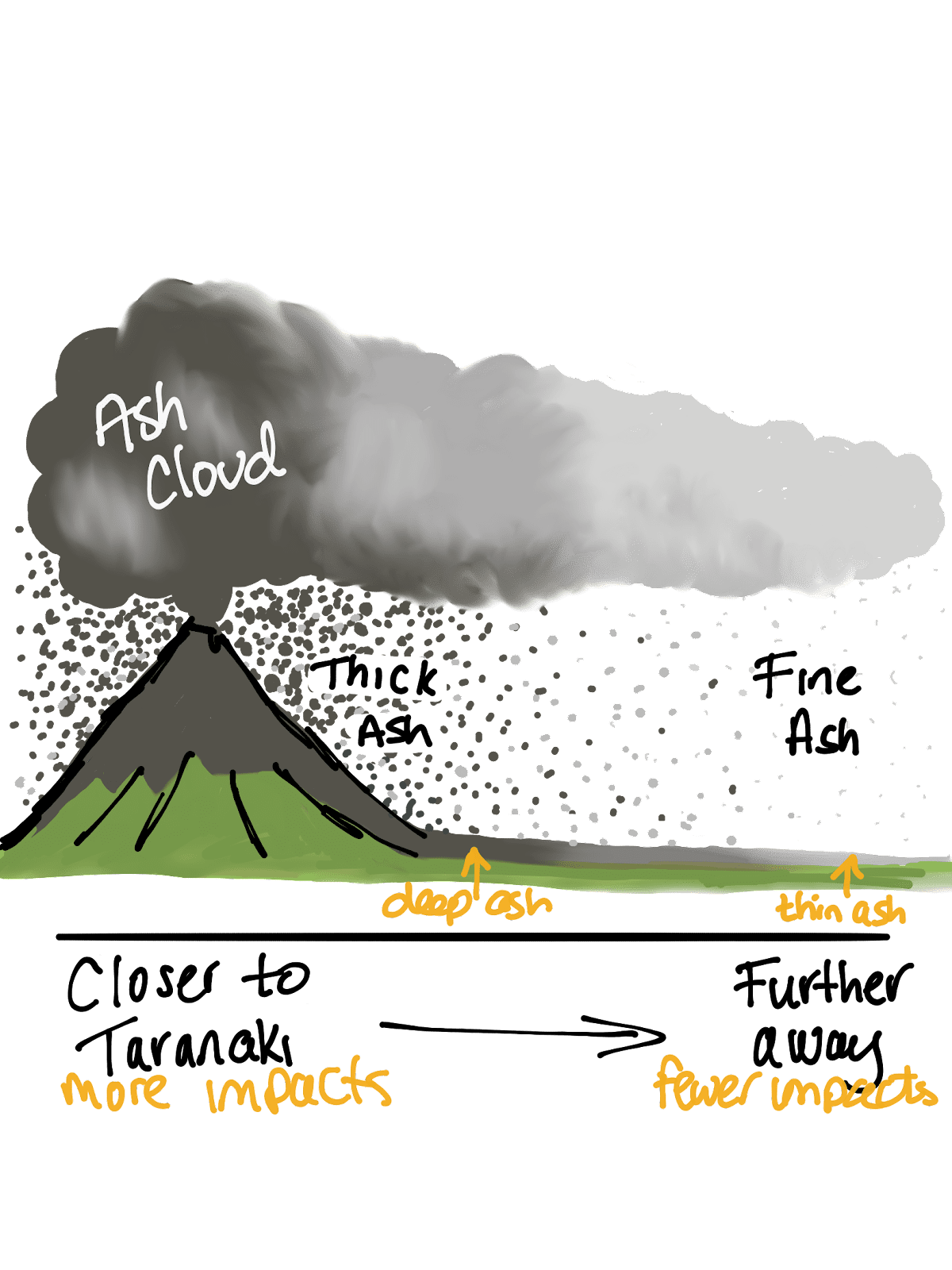
Reflecting on the impact the posters have had in the short time since their publication, Teresa says, “In environmental education there is Awareness, Knowledge, Intention To Act, and then Action. The response has been massive. It’s our biggest social media post we’ve ever had. So, I think we’ve obviously got the awareness bit ticked off. But it’s a whole trail to get down to the other end where people are truly more prepared as a result of the posters.”
One other crucial decision the team made was to not use the term ‘hazard’ anywhere on any of the posters. This was done primarily out of respect for local Iwi, who view the maunga as an ancestor, but also to avoid any anxiety such language provokes.
With requests from schools and others pouring in, it is hoped that the TEMO’s Taranaki Maunga poster series will prove to be a valuable tool in the ongoing effort to help build community resilience to future volcanic activity in the region.
